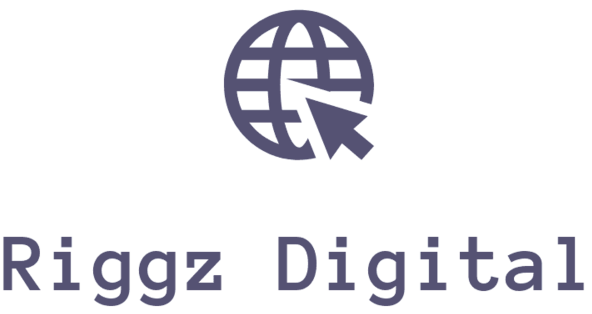Facebook advertising can be a game-changer for businesses, but even seasoned marketers fall into common traps that drain budgets and limit results. Simple mistakes—like targeting the wrong audience, neglecting ad creatives, or ignoring key performance metrics—can mean the difference between a successful campaign and wasted ad spend.
Mastering Facebook ads isn’t just about launching campaigns; it’s about avoiding pitfalls that hurt performance. Whether running ads for the first time or refining an existing strategy, knowing what not to do is just as important as knowing what works. Here’s a breakdown of the most common mistakes in Facebook advertising and how to sidestep them for better results.
Table of Contents
Common mistakes in Facebook advertising:
Relying Too Much on One Ad Format
Focusing solely on a single ad format is a common mistake in Facebook advertising that can limit your campaign’s effectiveness. By diversifying your ad formats, you can engage your audience more effectively and achieve better results.
The Pitfalls of Monotony
Relying exclusively on one ad format can lead to:
- Ad Fatigue: Users may become indifferent to repetitive content, reducing engagement.
- Limited Reach: Different formats cater to varied user preferences; sticking to one may miss potential customers.
- Reduced ROI: A lack of variety can result in higher costs per engagement or conversion.
Exploring Facebook’s Ad Formats
To keep your audience engaged, consider these diverse ad formats:
- Image Ads: Simple yet effective, ideal for showcasing products or services with compelling visuals.
- Video Ads: Great for storytelling and demonstrating product features in action.
- Carousel Ads: Allow users to swipe through a series of images or videos, perfect for highlighting multiple products.
- Slideshow Ads: Combine images, text, and sound to create lightweight videos, suitable for all connection speeds.
- Collection Ads: Offer a seamless browsing experience, enabling users to discover and purchase products directly from their mobile devices.
Benefits of Ad Format Diversity
Incorporating various ad formats into your strategy offers several advantages:
- Enhanced Engagement: Different formats capture attention in unique ways, keeping content fresh and appealing.
- Broader Reach: Catering to diverse user preferences increases the likelihood of reaching a wider audience.
- Improved Performance: A mix of formats can lead to higher click-through rates and conversions.
Expert Insight
According to a study by Facebook, “Diverse digital campaigns tend to have higher ad recall.”
This highlights the importance of varying your ad formats to enhance memorability and effectiveness.
Implementing a Diverse Ad Strategy
To diversify your ad formats effectively:
- Analyze Your Audience: Understand their preferences and behaviors to select appropriate formats.
- Test and Learn: Experiment with different formats to identify what resonates best with your audience.
- Monitor Performance: Regularly review metrics to assess the effectiveness of each ad format.
- Adjust Accordingly: Refine your strategy based on performance data to optimize results.
Neglecting Retargeting & Custom Audiences
Neglecting retargeting and custom audiences is a common mistake in Facebook advertising. This oversight can significantly impact your campaign’s success. By not leveraging these powerful tools, you might miss out on re-engaging potential customers.
The Importance of Retargeting
Retargeting allows you to reconnect with users who have previously interacted with your brand. This strategy keeps your products or services fresh in their minds. According to a study, “Retargeting can increase conversion rates by up to 150%.”
Benefits of Retargeting:
- Increased Brand Recall: Keeps your brand visible to interested users.
- Higher Conversion Rates: Encourages users to complete desired actions.
- Cost-Effective: Targets warm leads, reducing acquisition costs.
Leveraging Custom Audiences
Custom audiences enable you to target specific groups based on their interactions with your business. This precision ensures your ads reach the most relevant users.
Types of Custom Audiences:
- Website Visitors: Users who have browsed your site.
- App Users: Individuals who have engaged with your app.
- Customer Lists: Existing customers from your database.
- Engagement: People who have interacted with your content on Facebook or Instagram.
Creating Lookalike Audiences
Once you’ve established custom audiences, you can expand your reach using lookalike audiences. This feature identifies new users similar to your existing customers. According to Wikipedia, “A lookalike audience is a group of social network members who are determined as sharing characteristics with another group of members.”
Advantages of Lookalike Audiences:
- Broadened Reach: Access users likely interested in your offerings.
- Improved Targeting: Focus on high-quality prospects.
- Scalability: Easily adjust audience size based on campaign goals.
Avoiding the Neglect
To ensure you’re not overlooking these essential strategies:
- Set Up Retargeting Campaigns: Use Facebook’s tools to re-engage past visitors.
- Define Custom Audiences: Segment users based on their interactions.
- Utilize Lookalike Audiences: Expand your reach to similar potential customers.
Underestimating the Power of Social Proof
Underestimating the power of social proof is a common mistake in Facebook advertising. This oversight can significantly impact your campaign’s success. By not leveraging social proof, you might miss out on building trust and credibility with your audience.
The Influence of Social Proof
Social proof refers to the psychological phenomenon where people look to others’ actions and opinions to guide their own behavior.
In the context of Facebook advertising, incorporating social proof can enhance your brand’s credibility and encourage potential customers to engage with your content.
Benefits of Social Proof in Advertising:
- Increased Trust: Users are more likely to trust your brand when they see others endorsing it.
- Higher Engagement: Posts with social proof tend to receive more likes, comments, and shares.
- Improved Conversion Rates: Potential customers are more inclined to make a purchase when they see positive reviews or testimonials.
Types of Social Proof to Utilize
Incorporating various forms of social proof in your Facebook ads can make them more compelling:
- Customer Testimonials: Share positive feedback from satisfied customers.
- User-Generated Content: Feature content created by your customers showcasing your products or services.
- Influencer Endorsements: Collaborate with influencers who can vouch for your brand.
- Ratings and Reviews: Display star ratings and reviews to highlight customer satisfaction.
- Social Media Mentions: Showcase posts where users mention or tag your brand.
Impact of Social Proof on Consumer Behavior
The presence of social proof in your advertising strategy can significantly influence consumer decisions. According to a Nielsen study, 70% of consumers trust online reviews, second only to personal recommendations.
Statistics Highlighting the Importance of Social Proof:
| Statistic | Source |
| 70% of consumers trust online reviews | Nielsen Study |
| 86% of consumers say authenticity is important | Stackla Report |
| 60% believe user-generated content is most authentic | Stackla Report |
Implementing Social Proof in Your Facebook Ads
To effectively incorporate social proof into your Facebook advertising strategy:
- Encourage Customer Reviews: Prompt satisfied customers to leave positive reviews on your Facebook page.
- Share User-Generated Content: Repost content created by your customers that features your products or services.
- Highlight Testimonials: Include customer testimonials in your ad copy or visuals.
- Collaborate with Influencers: Partner with influencers who align with your brand values to reach a broader audience.
- Display Social Media Mentions: Showcase posts where users have tagged your brand to build credibility.
Forgetting to Exclude Past Customers
Overlooking the exclusion of past customers in your Facebook advertising campaigns is a common mistake that can lead to wasted ad spend and customer annoyance. By not excluding these individuals, you risk targeting those who have already converted, missing opportunities to engage new prospects.
Why Exclude Past Customers?
Ensuring your ads reach the right audience is crucial for maximizing return on investment (ROI). Targeting individuals who have already purchased may not only waste resources but also irritate loyal customers.
Benefits of Excluding Past Customers:
- Optimized Ad Spend: Focus your budget on acquiring new customers.
- Enhanced User Experience: Prevent existing customers from seeing irrelevant ads.
- Improved Conversion Rates: Targeting fresh prospects increases the likelihood of conversions.
How to Exclude Past Customers
Implementing audience exclusions in Facebook Ads Manager is straightforward and can significantly improve campaign performance.
Steps to Exclude Past Customers:
- Create a Custom Audience: Upload a list of past customers’ emails or phone numbers.
- Apply Exclusion: In your ad set, select the custom audience to exclude.
- Update Regularly: Keep your exclusion list current to maintain accuracy.
Potential Pitfalls and Solutions
While excluding past customers is beneficial, it’s essential to be aware of potential challenges.
Common Issues:
- Incomplete Data: Missing customer information can lead to ineffective exclusions.
- Data Freshness: Outdated lists may result in targeting errors.
Solutions:
- Regular Data Audits: Ensure customer information is up-to-date.
- Integrate CRM Systems: Automate data synchronization between your CRM and Facebook Ads Manager.
Expert Insight
According to The Search Guru, excluding recent purchasers is crucial to avoid wasted ad spend and ensure your ads target the right audience.
By proactively excluding past customers from your Facebook advertising campaigns, you can optimize your ad spend, enhance user experience, and improve overall campaign effectiveness.
Using Clickbait That Hurts Ad Relevance
Using clickbait in your Facebook ads might seem like a clever tactic to grab attention, but it often backfires, harming your ad relevance and overall campaign performance.
What Is Clickbait?
Clickbait refers to sensational or misleading headlines designed to entice users to click on content. While this approach may temporarily boost click-through rates, it often leads to user disappointment when the content doesn’t match expectations. This mismatch can result in negative feedback and decreased trust in your brand.
Impact on Ad Relevance
Facebook assesses the relevance of your ads to determine how they resonate with your target audience. Ads deemed irrelevant face reduced impressions and higher costs. Engaging in clickbait tactics can negatively affect your ad’s relevance score, leading to:
- Lower Engagement: Users may ignore future ads from your brand.
- Increased Negative Feedback: Users might hide or report your ads.
- Higher Advertising Costs: Facebook may charge more to display your ads.
According to Wikipedia, Facebook has implemented measures to reduce the impact of clickbait by analyzing user engagement metrics, such as the time spent on linked pages.
Best Practices to Avoid Clickbait
To maintain ad relevance and foster positive user experiences, consider these strategies:
- Craft Honest Headlines: Ensure your headlines accurately reflect the content.
- Deliver Valuable Content: Provide information that meets user expectations.
- Align Ad Copy and Landing Pages: Ensure consistency between your ad’s message and the landing page content.
- Monitor Engagement Metrics: Keep an eye on user interactions to gauge ad effectiveness.
- Avoid Sensationalism: Steer clear of exaggerated claims that may mislead users.
Consequences of Clickbait
Employing clickbait not only damages your brand’s credibility but also leads to tangible negative outcomes:
Negative Outcomes of Clickbait:
| Outcome | Description |
| High Bounce Rates | Users leave your site quickly, indicating dissatisfaction. |
| Decreased Trust | Users may lose confidence in your brand’s authenticity. |
| Reduced Organic Reach | Facebook’s algorithm may limit the visibility of your future posts. |
| Increased Ad Costs | Lower relevance scores can lead to higher costs per click or impression. |
| Account Penalties | Repeated use of clickbait can result in account restrictions or bans. |
According to True Anthem, posting clickbait can reduce not only the impressions of clickbait posts but also everything else from your account.
Avoiding clickbait is essential for maintaining high ad relevance and fostering trust with your audience. By providing honest, valuable content and aligning your ad copy with user expectations, you can enhance your Facebook advertising effectiveness and avoid common pitfalls associated with misleading tactics.
Conclusion
Avoiding common mistakes in Facebook advertising can transform your campaigns from money-wasters to powerful customer magnets. Simple tweaks like excluding past customers, leveraging social proof, and ditching clickbait can dramatically improve your ad performance.
Testing different strategies and staying updated with Facebook’s best practices will keep your ads relevant, engaging, and profitable. Now go out there and make those ads work smarter, not harder!

